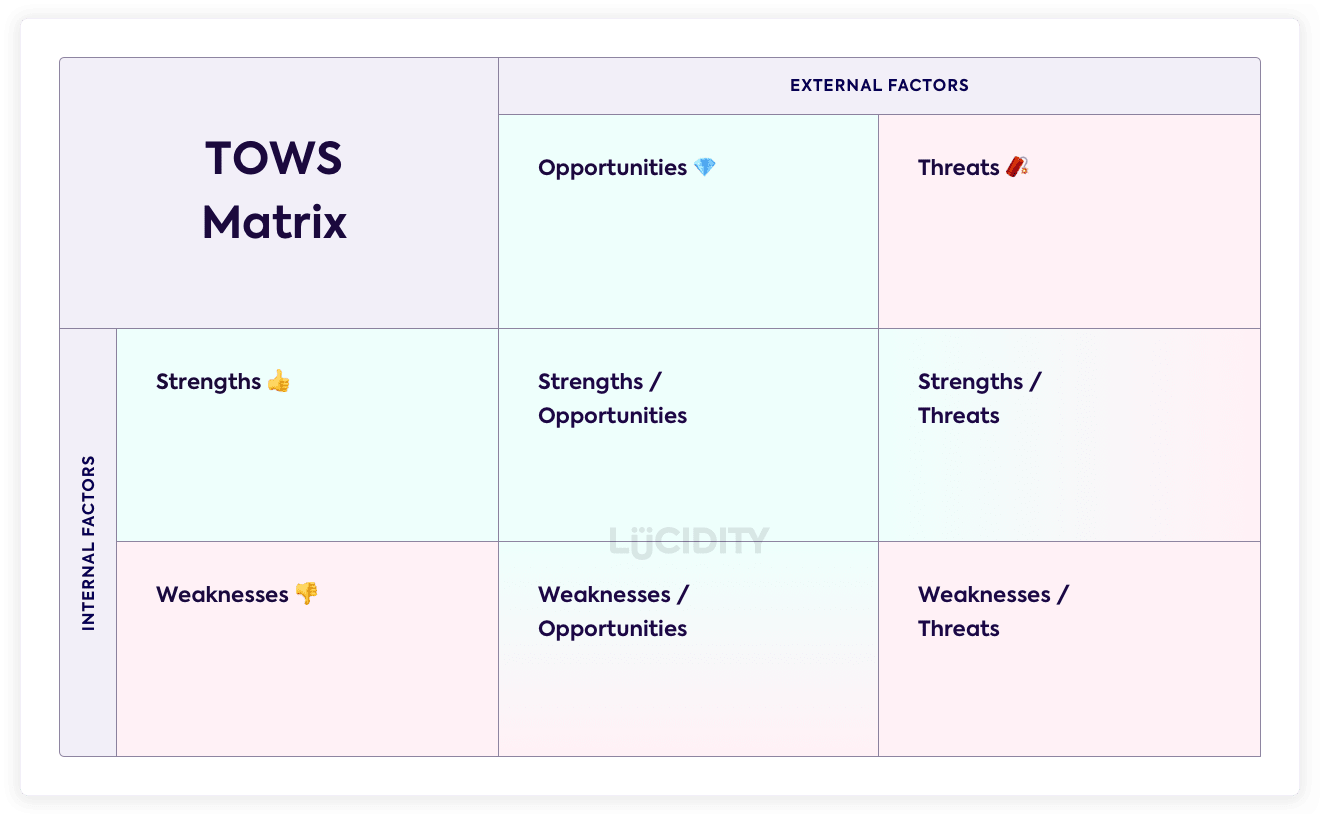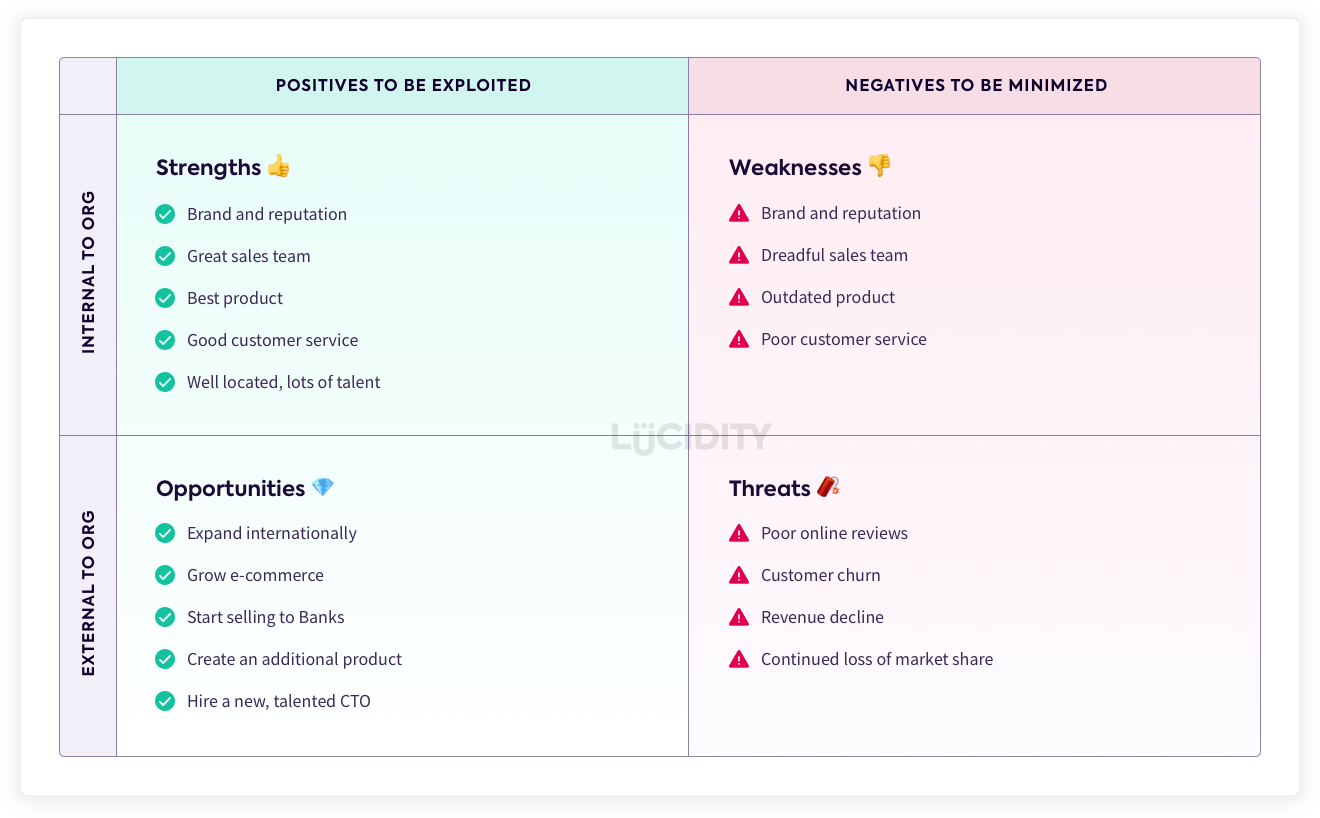There’s a misconception about TOWS that it’s just a different acronym for SWOT, but it’s actually an evolution of SWOT Analysis.
A TOWS Analysis is a way of taking a SWOT Analysis further, to provide actionable links between the different parts of your business and environment. It’s a really great way to extend your SWOT Analysis.
If you’re like to learn a little more before we start, check out our Introduction to TOWS Analysis before you read this.
A TOWS Analysis looks like the above, and is about linking the different components of a SWOT together to come out with clear actions for you, your team or company.
1 – Complete a SWOT
Before you can complete a TOWS, you must have an updated SWOT. If you’ve not completed a SWOT before, go to the Ultimate Guide to SWOT Analysis.
At this point you’ll have a SWOT that looks something like this:
2 – Identify The Actions
Now it’s time to begin forming the relationships that will give you clear actions. We’ll add some new sections into the framework to begin to form four relationships. Remember, it’s fine that not every part of your SWOT will link to every other part.
Strengths & Opportunities
The relationship between your internal strengths and external opportunities looks at how to take advantage of the opportunities using your strengths. Compare each strength against each opportunity and ask yourself:
- Can this strength be used to take advantage of the opportunity?
- What actions do we need to take to make use of the strength?
You’ll look to conclude in this box a few actions that directly enhance your opportunities by using your strengths.
Strengths & Threats
Avoiding or mitigating the threats facing a business can be crucial to success, which is the purpose of this relationship evaluation. Take a look at each strength and map them against each threat. Ask yourself:
- Can this strength reduce or remove this threat?
- What do we need to do to remove or reduce this threat?
- Is it a priority?
At the end this box will have a list of clear actions around using your strengths to remove your threats.
Weaknesses & Opportunities
At first glance it may seem unusual to map a weakness to an opportunity, but the link is as important as the other relationships. Taking the same approach, go through each weakness and compare it to each opportunity considering…
- Does this weakness prevent or risk this opportunity?
- Should we address the weakness?
- What actions do we need to take to remove the weakness?
In this box you should have a list of actions you’ll be taking to address the weaknesses holding you back.
Weaknesses & Threats
This isn’t a cheery section – look at the weaknesses and the threats, both are risks to the business. Ask yourself…
- Which relate to each other?
- Are there weaknesses that result in threats?
- Which elements should be addressed?
In this box you’ll have a list of actions or highlights around what the riskiest aspects of your business.
In summary:
- Strengths-Opportunities: Use strengths to take advantage of opportunities
- Strengths-Threats: Use strengths to remove threats
- Weaknesses-Opportunities: Which weaknesses hold you back?
- Weaknesses-Threats: What threats can be removed?
3 – Prioritise & Assign Actions
Once you’ve been through each relationship, you’ll have a list of defined actions. Place them into a priority order by evaluating them against the Opportunity and the Threat that they relate to and begin to assign them to members of the team.
Congratulations, you’ve completed your TOWS Analysis and can now start taking informed, positive actions! Check out our Ultimate Guide to SWOT Analysis for more tips and advice!















